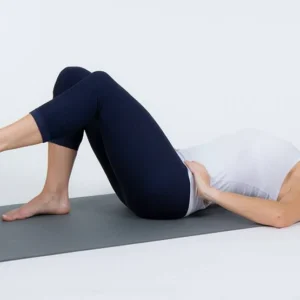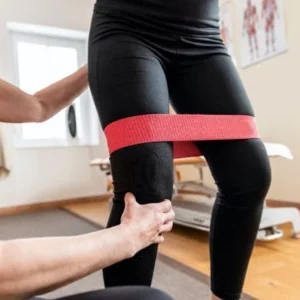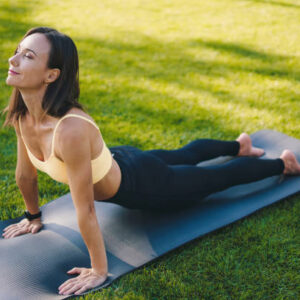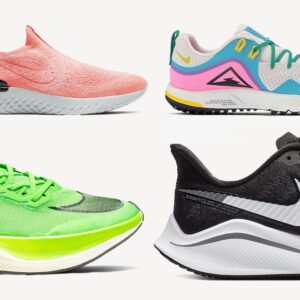Affiliate Disclosure: This post contains affiliate links. If you purchase through them, I may earn a small commission at no extra cost to you. Thanks for supporting my work and wellness journey.
What No One Tells You About A Fitness Tracker
I was excited the moment I strapped on my first fitness tracker.
It felt like I was finally stepping into the future… ready to crush my goals, track my progress, and become one of “those women” who drink two liters of water before noon and get 10,000 steps in without breaking a sweat. The sleek little band promised transformation. Motivation. A daily dose of self-discipline at the tap of my wrist.
But just a few weeks in, I was confused and honestly, a little disheartened.
The numbers didn’t make sense. My heart rate would spike while watching TV. Some days it claimed I barely slept, even though I felt rested. I hit my step goal daily but didn’t feel fitter, stronger, or healthier. It felt like my tracker and I were having two different conversations about my body.
That’s when I realized something important—fitness trackers do lie.
Not out of malice, of course. They’re not trying to gaslight you. But they aren’t perfect. They can’t read your mind or understand your story. And if you don’t know how to interpret the data or manage your expectations, they can lead you down a very frustrating path.
So, if you’re thinking about getting a fitness tracker—or already have one and feel like it’s gaslighting you, this post is for you. We’re going to unpack the hidden truths, the common mistakes, and the smarter way to use these popular little devices. I’ll also share a few trackers I actually trust, like the Samsung Galaxy Fit3, Fitbit Sense 2, and Amazfit Bip 6, along with some helpful tips from women just like you.
Let’s get into it.
1. Why A Fitness Tracker Can Mislead You
I hate to be the one to break it to you, but your fitness tracker isn’t a tiny doctor. It’s not even a coach. It’s a very clever tool, powered by sensors and algorithms but still just a tool.
Here’s what most people don’t know:
Your fitness tracker is not a medical devices.
Yes, they track heart rate, sleep, oxygen levels (SpO₂), and sometimes even stress—but these are approximations. They’re based on optical sensors and calculations, not lab-grade testing. If you’ve ever seen your heart rate skyrocket while you’re still, or watched your “deep sleep” score change while you were wide awake, you know what I mean.
They use generalized algorithms.
Trackers are designed using massive datasets. That means they calculate metrics based on averages—not your unique physiology. If your resting heart rate or sleep cycle doesn’t match the norm, your tracker may interpret that as a problem when it’s actually just… you being you.
They lack context.
Had a stressful day? Slept poorly because of a noisy neighbor? Just coming off your period? Your tracker has no idea. It doesn’t know if your “low steps” were because you were resting your knee or if your heart rate is up because you’re anxious. It reads numbers, not emotions or life situations.
The emotional toll is real.
I’ve worked with women who felt genuinely ashamed when their fitness tracker showed “low activity” or poor sleep. One even told me, “I feel like I’m failing my own body.” But it wasn’t her body that was the issue—it was the tracker’s lack of nuance.
So let’s be clear: you are not lazy, broken, or undisciplined. You’re navigating life, and a device that can’t feel what you feel will never fully understand your journey.
2. Fitness Tracker Mistakes We All Make
If you’re like me, you probably thought a fitness tracker would just magically know how to help you get healthier. But these tools require more finesse than we realize. Here are the top mistakes I’ve made—and seen others make too.
Wearing it too loose or too tight.
This seems simple, but it affects everything. If your tracker doesn’t sit snugly (especially during workouts or sleep), it’ll give inaccurate pulse readings. Too tight, and it may restrict blood flow. You need that sweet spot.
Forgetting to take rest days.
When your step count becomes your badge of honor, you might feel guilty for resting. But rest is part of growth. Your tracker doesn’t know when you’re recovering. You do.
Panicking over low sleep scores.
One bad night doesn’t ruin your week. In fact, obsessing over sleep data can make sleep anxiety worse. Use the sleep tracker as a general guide—not a nightly report card.
Assuming “more features” = better results.
We chase trackers with 100+ sport modes, ECGs, voice assistants—but often, we don’t use half the features. What matters is how you use the few that count.
Using it during workouts for all metrics.
Trackers are often most accurate when you’re at rest. During intense movement—especially HIIT or dance—heart rate and calorie burn estimates can get sketchy.
Comparing data with friends.
You might have similar trackers but wildly different data. That’s okay. Your metrics are your own. Let them stay that way.
3. How to Use a Tracker the Right Way
So if fitness trackers aren’t perfectly accurate… why even use one?
Because when you understand how to use it, it becomes a powerful mirror. Not for judgment but for patterns.
Here’s how to make your tracker work for you:
Use it as a guide, not a judge.
Don’t let it dictate your self-worth. Use it to notice patterns, test habits, and stay aware of your body—not shame it.
Focus on trends, not daily data.
A single day of low steps or poor sleep doesn’t mean much. But a consistent pattern over weeks? That’s helpful insight. Think long game.
Track key moments.
Want better sleep? Focus on nighttime data. Tracking your health? Prioritize resting heart rate, not during high movement. Be strategic.
Pair it with journaling.
Seriously. Write down how you feel alongside what the tracker says. You’ll start to notice things like, “My heart rate was higher today, but I felt anxious—not tired.” That’s gold.
Set YOUR goals.
10,000 steps is arbitrary. If your body feels best at 7,000 and a gentle walk, let that be your target. Customize your goals. It’s your journey.
4. Tracker Recommendations (Tested & Trusted)
Not all trackers are created equal—and I’ve tried quite a few. If you’re considering getting one, these are my top recommendations across different needs and price points.
💶 Budget-friendly (UK)
Samsung Galaxy Fit3
It’s lightweight, reliable, and doesn’t overcomplicate things. Great for beginners who want accurate step counts, sleep monitoring, and a clean display.
👉 Shop here
🌟 Best overall (UK)
Fitbit Sense 2
This is what I call the “all-rounder”. It checks your heart health, monitors stress, and even has skin temperature tracking. Super helpful for women tracking cycles or emotional well-being.
👉 Shop here
⚡ Long battery (UK)
Amazfit Bip 6
This one surprised me with its 14-day battery, built-in GPS, and over 140 workout modes. If you’re active outdoors or love long walks, you’ll love the free maps and large screen.
👉 Shop here
🔊 Smartwatch call features (US)
Smart Watch for Women
This one’s for the multitaskers—it allows calls directly from your wrist, tracks heart rate, sleep, and even SpO₂. Comes with 2 bands and is compatible with iPhone & Android.
👉 Shop here
📱 Smartwatch with GPS (US)
Amazfit Active 2
A sleek all-in-one for women who want durability, GPS, 160+ workout modes, and long battery life. I love the customizable faces and the intuitive app.
👉 Shop here
5. Not Just Apps: Connect to Your Progress
Let’s talk synergy.
Your tracker shows numbers, but how do you turn those numbers into progress?
The secret? Pair it with the right fitness apps—especially ones that focus on women’s needs: menstrual cycle awareness, mood tracking, meal reminders, stretching routines.
I built a guide just for this:
👉 Top 10 Fitness Apps for Women to Stay On Track
Inside you’ll find apps for every type of woman—from the overwhelmed beginner to the habit-forming queen. Download the ones that feel like you. Sync them with your tracker, and watch your results become more intentional.
FAQs
Q: Can I rely on the sleep score?
Use it as a trend tracker, not a verdict. One bad night isn’t the end. Look at weekly averages and pair it with how your body feels.
Q: Why does my fitness tracker say I’m inactive when I work out?
Some workouts—like yoga or pilates—don’t involve steps, so trackers misinterpret them. Also, if the strap is too loose or covered by clothing, it won’t read movements accurately.
Q: How long should a fitness tracker last?
Typically 18–24 months. After that, batteries weaken and newer software updates may not be supported.
Q: What’s the best time to wear a fitness tracker?
Most accurate readings come when you’re still—like sleeping or early morning. For workouts, use it as a complement, not the main tool.
Q: Can it really track stress?
Some models (like Fitbit Sense 2) track changes in your skin temperature and heart rate variability—which may indicate stress, but not diagnose it. Again, it’s a guide.
Let Your Tracker Serve You
A tracker should feel like a friend—not a prison warden. One that cheers you on, shows you how far you’ve come, and gives helpful reminders—not shame or pressure.
If you’re using one now, or thinking of buying, ask yourself:
Does it support my health?
Does it make me more mindful or more anxious?
Is it helping me build consistency—not just track activity?
Fitness isn’t a destination—it’s a relationship. And like any relationship, you need honesty, understanding, and kindness. Your tracker is a tool. You are the magic.
So go ahead—pick the one that fits your lifestyle. Click the links, explore the features. But more importantly, trust your body, your rhythm, and your power.
Because at the end of the day, your strength isn’t in the number—it’s in the step you take.






